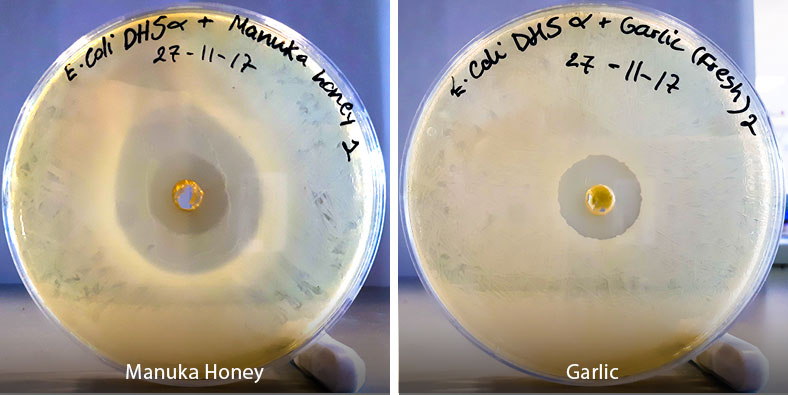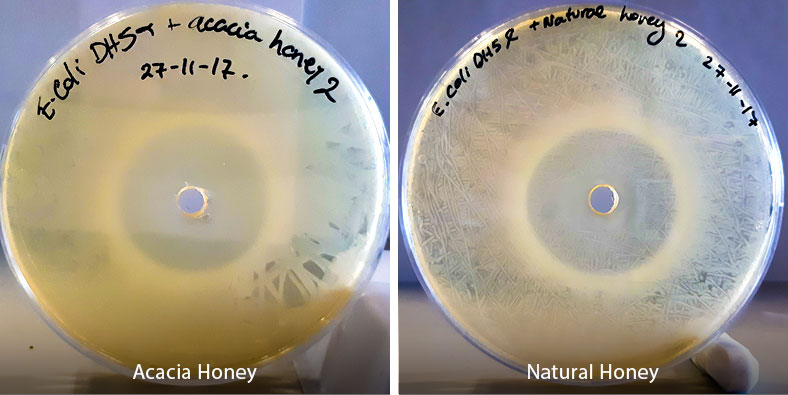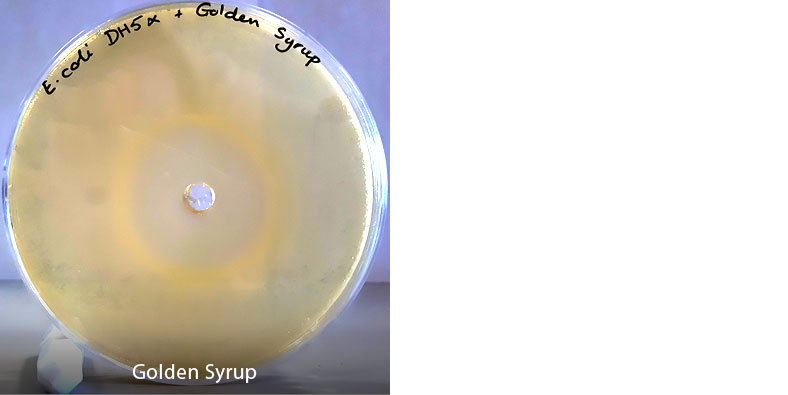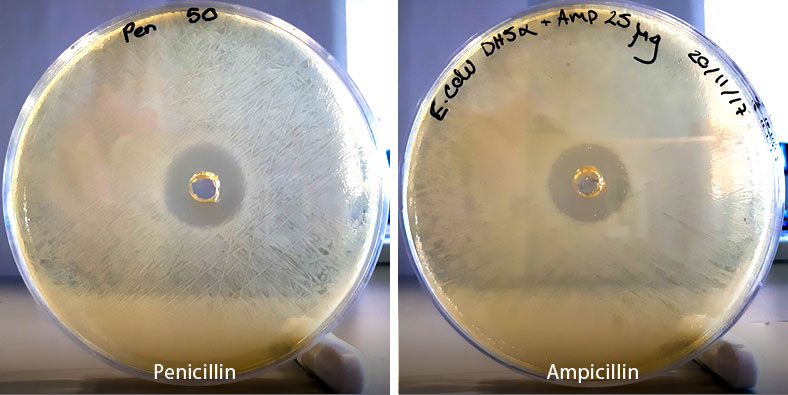BT Young Scientists ask "Natural antibiotics: Can they solve the resistance crisis?"

The School of Biochemistry and Cell Biology facilitated experiments by BT Young Scientist competitors, Aisling O'Connor and Aisha Ghori from Christ King Girls Secondary School, Douglas, Cork. Aisling and Aisha tell us about their experience.
Our names are Aisha Ghori and Aisling O’ Connor and we are transition year students in Christ King Secondary School in Douglas, Cork. We recently took part in the BT young scientist and technology exhibition in the RDS in Dublin. Our project was entitled “Natural Antibiotics: Can They Solve the Resistance Crisis” and dealt with the growing health crisis of antibiotic resistance. For our project, we carried out our experiments in the School of Biochemistry and Cell Biology laboratories. We contacted the School of Biochemistry and Cell Biology in UCC and Dr Sinéad Kerins kindly let us use the labs.
Because of the growing problem of bacteria developing resistance to antibiotics we realised we had to step away from commercial drugs and try to find a new alternative to commonly used antibiotics such as ampicillin and penicillin, etc. We had the idea to test natural substances (snail mucus from the Cornu aspersum, natural honey, acacia honey, Manuka honey, fresh-crushed garlic and allicin powder) against E. coli DH5α and E. coli DH5α with an ampicillin resistant plasmid added to it to see how effective the natural substances were in killing the bacteria and how they compared to ampicillin and penicillin.
When we arrived at the labs, we were both very excited. Dr Sinéad Kerins and Jenny Duane, Senior Technical Officer, helped us to plan out exactly how we were going to perform our experiments. They taught us many new techniques such as spread-plating and an introduction to the aseptic technique. They taught us how to make and pour our own agar plates using LB media. They also showed us around the labs and the different equipment in the School of Biochemistry and Cell Biology.

We found that Manuka honey and the fresh-crushed garlic had the largest clearings of bacteria. Manuka honey had a sensitive diameter of 36 mm and a resistant diameter of 17 mm. Garlic had a resistant diameter of 22 mm.
The Acacia and natural honeys both had large clearings, however the diameters were sensitive, meaning there was still some bacterial growth left in the zone of inhibition.

The snail mucus had a very weak effect on E. coli DH5α (less than 1 mm). However, after doing further research online we found that the mucus is known to have very strong effects on other types of bacteria such as Pseudomonas Aeruginosa.
The allicin powder failed to have any effect against the bacteria but we think this is due to an error in our methods when we were diluting the powder to form a paste to fit it into the hole we cut in the agar. It also may need to be activated by enzymes in the body for it to have any antimicrobial effect.

We used golden syrup as a control for our honey to make sure it wasn't just the high osmolarity that was killing the bacteria. We were very pleased with the results we got.
The 75μl of honey and garlic killed more bacteria than the 50μl of ampicillin and penicillin. This shows they have the potential to possibly replace commercial antibiotics in the future after more research and testing.

We both absolutely loved our time at the labs and learned so much even within the space of the three days we spent there. We could not have completed our experiments without the help of Dr Sinéad Kerins and Jenny Duane. We hope to keep developing our project and researching more about natural substances. After doing these experiments and working in the laboratories at UCC we are both sure this is what we want to study in college after school.
Aisling O Connor and Aisha Ghori
Christ King Secondary School
